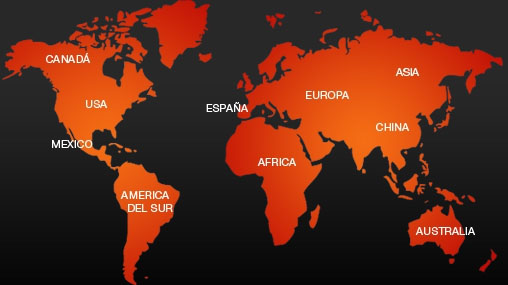- Inicio Acerca de RM Minerales
- Galería de fotos Blog RM Contacto
- Microscopia e instrumentos Pedidos Aviso legal
Copyright 2010-2025
www.rosellminerals.com



Ejemplar formado por dos cristales de cerusita de un tamaño más que considerable. Muestran la macla cíclica, con crecimientos escalonados. En el vértice del mayor podemos ver la macla de forma manifiesta. No son brillantes y en la parte posterior presentan una superficie cristalina rugosa, pero son excepcionales por su tamaño y cristalografía. Se disponen sobre una pequeña matriz de barita.
Ejemplar de buen tamaño de sodalita, con intenso color. No está pulida, totalmente al natural. Procedente de la colección Daunis (Barcelona).
Ejemplar de muy buen tamaño formado por agregados laminares de cristales de estibnita. La mina San Antonio está ubicada en la zona denominada "Quinola" junto a la carretera BA-5001 entre los pueblos de Alburquerque y La Codosera. Se trata de una importante mina de antimonio, cerrada desde 1986, y fue la mayor mina de este elemento en España y Europa. Procede de la colección Arguijo y data de los años 90.
Clásica piña de cuarzo hematoideo, var. jacinto de Compostela, con buen brillo, completa y en matriz de cristales de yeso.


Este ejemplar de plata destaca por mostrar unos crecimientos arborescentes de cristales cúbicos muy definidos de este noble metal. Además, la pieza procede de una mina marroquí de la que pocos ejemplares de este tipo han sido recogidos. Para añadir más importancia a la pieza hay que decir que la calcita ha sido eliminada mediante procedimientos mecánicos, sin ácidos que puedan provocar que la plata se ennegrezca. Los cristales de plata tan bien formados, brillantes y aislados no son muy habituales, normalmente se presentan deformados o en crecimientos complejos. Una pieza excelente y de buen tamaño.


Agregados de cristales laminares de semseyita, muy brillantes, algunos fracturados. Sobre una matriz de galena. Un clásico de la mineralogía rumana. De la colección Gerd Resag.
Ejemplar con un agregado de asbecasita, con facetas cristalinas. Color amarillento. Se dispone sobre una matriz con cristales hexagonales de clinocloro. Una especie difícil de encontrar. Este ejemplar procede de la localidad tipo.
Ejemplar con un agregado de asbecasita, con facetas cristalinas. Color amarillento. Se dispone sobre una matriz con cristales hexagonales de clinocloro. Una especie difícil de encontrar. Este ejemplar procede de la localidad tipo.
En este ejemplar podemos ver brillantes agregados de cristales marrones y transparentes de römerita, un sulfato de hierro muy raro. Se acompañan de coquimbita, con un intenso color violeta bajo luz fluorescente o tipo LED. Ambos se acompañan de metavoltina/copiapita amarillos, junto con algo de halotriquita fibrosa. Bajo la lupa podemos navegar en un mundo de cristales brillantes, con especies como la krausita (de color amarillento a gris transparente). Dejamos este placer de identificación al coleccionista. En cuanto a su estabilidad ambiental: esta muestra se ha almacenado durante más de ocho años sin alteraciones notables.
Este es un espécimen de azufre excepcional, tanto para esta lacalidad rusa como por la perfección de los cristales. En una cavidadde la matriz se disponen diversos cristales muy definidos y biterminados de azufre, mostrando claramente las facetas de bipirámides de diferentes órdenes. Con brillo, entre translúcidos a transparentes. Con otro grupo de cristales, uno de ellos predominante, en la parte lateral. En una matriuz con cristales escalenoédricos de calcita. Ejemplares de esta mina y con esta calidad son más que difíciles de ver. Un ejemplar procedente de la colección Astor (Barcelona). Puede encontrar más información de esta localidad en geo.web.ru.
Espécimen muy rico formado por numerosos agregados de cristales aciculares blancos (transparentes) de picrofarmacolita, acompañados de eritrita rosada rica en Mg (hörnesita), junto con farmacolita y sainfeldita. En matriz. Estos ejemplares fueron extraídos de la mina Bou Azer en febrero de 2018. Son muy estéticos bajo aumento, con buen tamaño para colección.


Los cristales de yeso de Piła son extremadamente raros de ver hoy día. En este ejemplar antiguo tenemos dos cristales maclados con apilamientos muy característicos del yacimiento polaco. Transparentes, brillantes y definidos. Presentan alguna pequeña mella debido a lo blando de la especie, sin afectar a la belleza e interés de la pieza. Con etiqueta manuscrita.
En este ejmplar podemos observar estéticos y brillantes agregados de cristales lanceolados de hidromagnesita, foliáceos, formando rosetas, de intenso color blanco, aunque son incoloros. Todos ellos se disponen sobre una matriz de roca. Una pieza catalana de las que hoy día cuesta encontrar, con especies poco habituales y con calidad. Recogida por Joan Astor en marzo de 1976.
Grupo divergente de cristales biterminados de amatista de esta famosa localidad de Guerrero. Un combinado estético de cristales de amatista de color zonado, más intenso en el núcleo, translúcidos a transparentes. Pequeñas mellas en las puntas, solo visibles bajo lupa. Casi imposibles de conseguir hoy día. De la colección Trigo (Mataró).
Ejemplar formado por una costra de smithsonita violeta, botrioidal, de rosa a lila, con brillo satinado y translúcida. Una muestra en miniatura de los antiguos ejemplares de la localidad clásica de Choix. Con etiqueta de la colección Trigo (Mataró) donde indica Durango y smithsonita cobaltífera. Pero la localidad es Choix.
Cristal de cuarzo hialino, de buen tamaño, que nos muestra un "fantasma" interior que sigue la geometría del principal. Con tono verdoso, probablemente debido a un miembro del grupo de la mica, fuchsita. Estos ejemplares son raros de ver hoy en día.
Ejemplar de muy buen tamaño formado por numerosos cristales lanceolados de barita, con muy buena definición de caras y aristas. Entre transparentes a translúcidos y con un color amarillento con zonación. Se disponen en una matriz con cristales de calcita y fluorita de tonos melados. La fluorita es activa bajo la luz UV-OL. Una pieza excepcional para esta mina asturiana.
Ejemplar de muy buen tamaño (15.5 cm) de vanadinita, formado por numerosos agregados de cristales, en ambas caras de la pieza, y dispuestos sobre una sólida matriz. Buen brillo, con cierta transparencia. Para vitrina.
Grupo de cristales de cuarzo, bitermninados, en crecimiento paralelo, con prismas desarrollados y facetas terminales definidas, translúcidos. Estos ejemplares fueron recogidos en esta cantera coruñesa que explota el cuarzo, una de las principales minas del mundo por la calidad y la cantidad de sus reservas. la mina fue descubierta en 1968 por tres gallegos que le dieron su nombre (de sus apellidos SEñarís, RAma y BALboa) a la concesión y que la encontaron mientras exploraban esos montes de la zona del Pico Sacro en busca de seixo (gal. roca blanca y muy dura) de buena calidad.
Grupo de cristales de cuarzo, bitermninados, en crecimiento paralelo, con prismas desarrollados y facetas terminales definidas, translúcidos. Estos ejemplares fueron recogidos en esta cantera coruñesa que explota el cuarzo, una de las principales minas del mundo por la calidad y la cantidad de sus reservas. la mina fue descubierta en 1968 por tres gallegos que le dieron su nombre (de sus apellidos SEñarís, RAma y BALboa) a la concesión y que la encontaron mientras exploraban esos montes de la zona del Pico Sacro en busca de seixo (gal. roca blanca y muy dura) de buena calidad.
Agregados de brillantes cristales de barita, transparentes y de un tono ligeramente amarillo. Se acompaña de pequeños cristales de esfalerita, complejos, y de galena. Procede de las Mines d'Osor, actualmente cerradas y de las cuales es imposible obtener estos ejemplares. La mina cerró en 1979 y llegó a tener once plantas con un pozo de 290 metros de profundidad. Aún se pueden ver las ruinas de las antiguas instalaciones y el pozo de donde se extraía y trataba esfalerita, galena y fluorita.
Grupo de cristales de ferberita de muy buen tamaño, brillo excepcional y de caras y aristas definidas. De esta clásica mina portuguesa. Procede de la colección Arguijo.
La scholzita es un raro fosfato de calcio y zinc, con localidad tipo en Alemania, aunque los ejemplares más ricos y estéticos se han encontrado en esta mina australiana. El ejemplar nos muestra, por ambos lados, numerosos agregados de cristales prismáticos, casi aciculares, transparentes y brillantes. Se acompaña de agregados globulares de calcofanita (analizados por SEM-EDS).
La scholzita es un raro fosfato de calcio y zinc, con localidad tipo en Alemania, aunque los ejemplares más ricos y estéticos se han encontrado en esta mina australiana. El ejemplar nos muestra, por ambos lados, numerosos agregados de cristales prismáticos, casi aciculares, transparentes y brillantes. Se acompaña de agregados globulares de calcofanita (analizados por SEM-EDS).
Ejemplar formado por agregados de cristales radiales de aragonito, con bandeados muy estéticos de color azul. Este ejemplar antiguo (años 80) viene etiquetado como procedente de Peñamellera, en Asturies. Otros ejemplares como este y de la misma época venían con esta localidad asturiana. Una curiosidad de la colección Joan Astor (Barcelona). Viene en su caja original y etiquetada.
